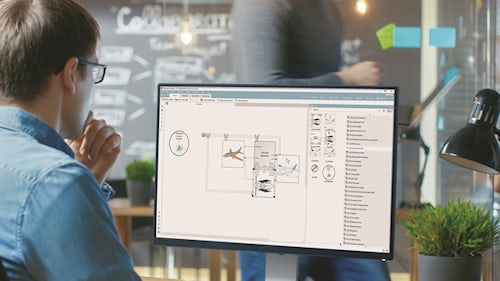航空系统集成
航空行业需要彻底转变。为了应对空中交通需求相关的众多挑战,亟需全新技术和概念。这些未来空中交通概念在帮助应对气候变化、交通拥堵问题以及不断提高的安全性需求方面不可或缺。随着世界经济关联性的不断增强,此行业中的相关企业必须协作、为后代制定更理想的可行空中交通概念。
本白皮书将阐述虚拟集成式飞机 (VIA) 方法如何帮助加快飞机系统工程。实施基于模型的设计方法,可以掌控飞机系统集成的复杂性(从组件到完整系统)。
Model-based design
Modern technologies have the potential to improve engineering processes by implementing a model-based design approach. The process starts with the bill-of-materials (BOM) and manages every change, keeping track of the requirement verification throughout the aircraft subsystems until the integrated system testing processes.
On the systems and structural engineering level, scalable multi-domain engineering tools help you to implement a model-based design approach and capture the complexity of aircraft systems design and development.
Engineering a system is all about understanding how the different physical phenomena affect a product’s functionality under normal and abnormal conditions as well as throughout all operational cycles. The complexity of aircraft systems engineering mandates tools that are truly multi-domain.
Using a model-based design approach, you can realize early aircraft model integration to assess and validate the multiphysics performance of the virtual aircraft systems.
Modeling and simulation for aircraft systems integration
Model-based design with aircraft system simulation closes the loop between the physical and digital world, enabling collaborative engineering processes throughout the extended enterprise of the aviation industry. Tools are available to help the industry initiate the engineering methodology shift for engineers to represent all the physics in an aircraft, such as structural, mechanical, fluid, electrical and thermal, and simulate their dynamic interactions. These tools address the component level up to the system level and can be integrated into a product lifecycle management process.
Model-based design with system simulation is becoming increasingly important in the field of aircraft development. Today, aircraft architecture needs to inherently reflect not only the dynamic interaction and the physical systems but also performance factors, such as fuel economy, safety, emissions and cabin comfort. System simulation allows a product to evolve in the best-possible manner throughout the development timeline.
